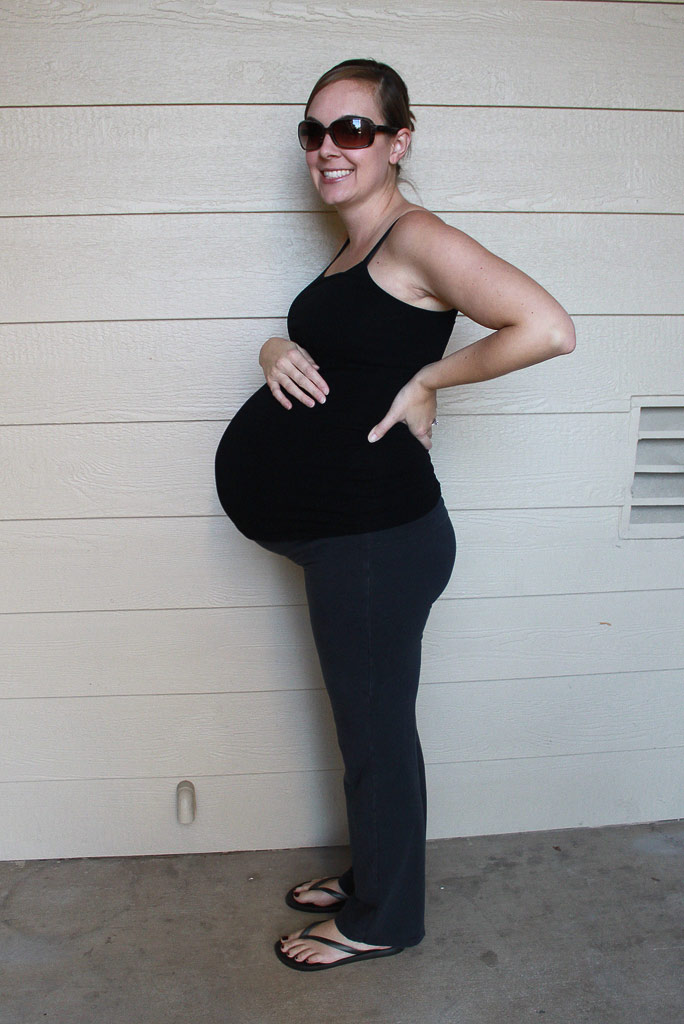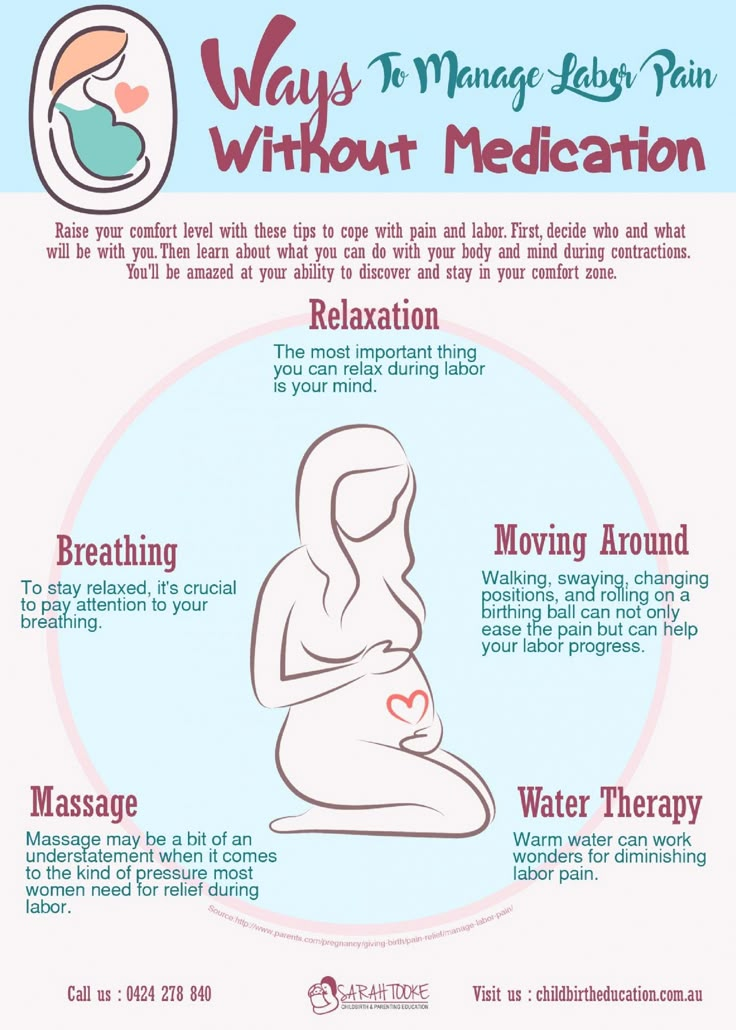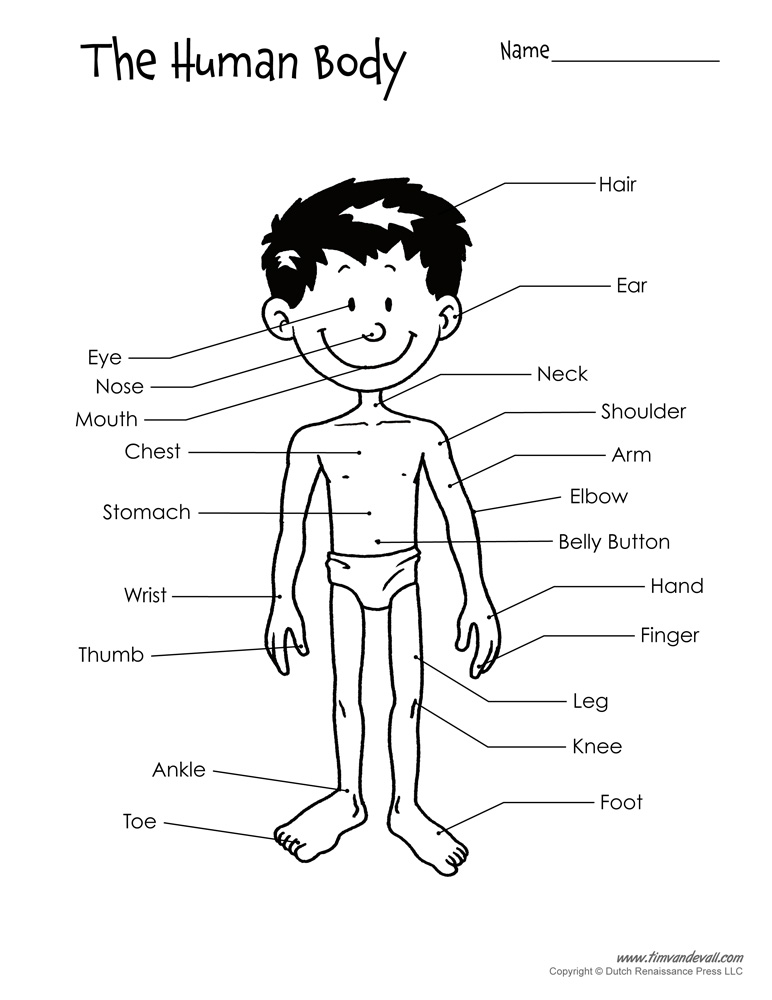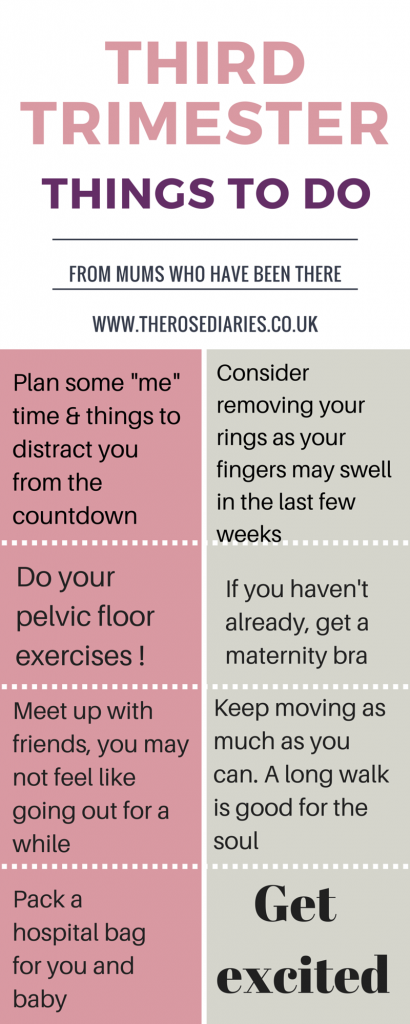Born a child
A Child Is Born: The fifth edition of the beloved classic--completely revised and updated by Lennart Nilsson, Linda Forsell, Paperback
Chapter 1
Woman and Man
Love—desire—longing. Sexual desire at its simplest is a biological drive, designed to ensure reproduction and the survival of our species, ideally with the best possible gene pool. Desire can be primitive, but also complex—as when two people fall in love. Love and sex bring us closer together, in body as well as spirit, instilling a feeling of deep connection.
The chemistry of love
It all begins in the brain, with that tiny, magical spark of first attraction. Something about another person tugs at us: their looks, their charisma, the sound of their voice, the way they carry themselves, or the way they smell. It could be a glint in the eye, a lingering glance, or an infectious laugh. Or maybe it is just that the time is right, for us or for our biological clock. Whatever the cause, our attraction has real physical effects. We blush and stammer. Our palms sweat. We feel a tingling in our veins, butterflies in our stomach.
When it comes to attraction and our choice of partner, our biology and chemistry probably affect us more than we know. The chemistry of love involves a host of substances: dopamine, noradrenaline, serotonin, oxytocin, vasopressin, cortisol, pheromones, and especially the sex hormones estrogen and testosterone. Testosterone in men and estrogen in women transmit complicated chemical messages. These hormones affect our appearance and feelings and are essential to the reproduction process.
Like sexual desire, the longing for a child is a powerful, primal drive in women and men alike. In nature, almost all reproductive processes rely on one male and one female parent. This is true in both the plant and the animal kingdoms, which means it is true for humans as well. Conceiving a human baby requires a mature and viable egg from a woman and a mature and viable sperm from a man, although this may or may not be reflected in the actual partner relationship or the makeup of the family-to-be. For many couples, a child is the natural consequence of what began with attraction, then became passion, and finally grew into love.
For many couples, a child is the natural consequence of what began with attraction, then became passion, and finally grew into love.
The human code
All human beings belong to the biological species homo sapiens, with a shared genetic code that distinguishes us, for example, from apes, from pigs, and from birds. The great apes, chimpanzees, gorillas, and orangutans are our closest relations; our genetic codes differ only marginally from theirs. We are also genetically very similar to swine, or the porcine family. The differences from one human being to the next are even smaller, measurable in tenths of a percent, but they are still big enough to make each individual unique. We now know that even identical twins carry tiny genetic differences. Human beings of the same descent are genetically very similar; the closest likeness is among members of the same nuclear or extended family, who can share the same hair and eye color, height and weight, and even health status and life expectancy.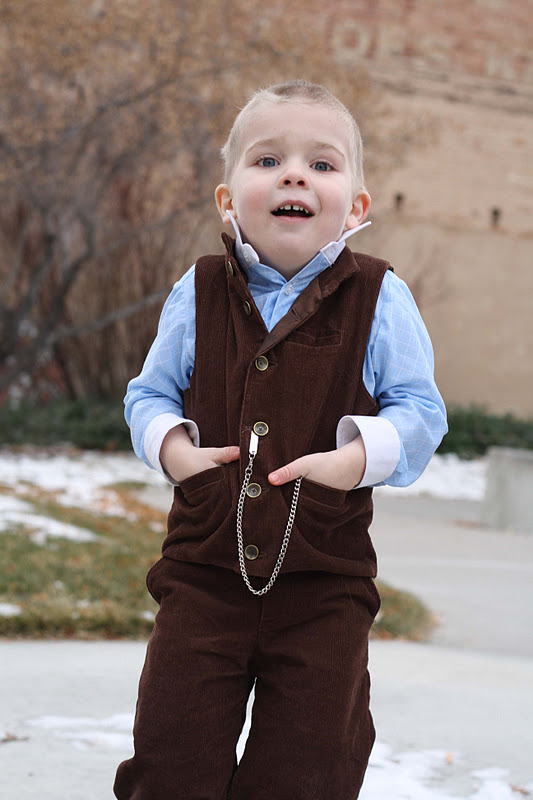
In recent years genetics has become a central focus in biology. Much can be explained by genetics, but it is important to realize that genetics and the environment are in constant interaction. We know that our environment affects us in many ways, and that the environment we experienced at the embryonic and fetal stages of our development influences our later lives. We are now very much aware of how important it is for pregnant women to think about what they eat and drink and the environments to which they are exposed.
Today we know much more than ever before about the significance of genetics, both for mankind as a unique species and for each individual. Our complete genetic code, consisting of some 20,000 different genes, has now been mapped. But we still know relatively little about what these genes do, what they imply for each of us, and how they either cooperate with or oppose one another in our bodies. And much remains to be learned about how the environment affects the ability of each individual gene to express itself.
A copy of our genetic code is stored in the nucleus of every cell in our bodies. Within the nucleus, forty-six chromosomes carry the genetic material itself: our genes. This structure is common to all human beings. But there are small variations within the structure that determine the characteristics of each human being, and these little differences are what make every individual just slightly different from every other, in terms of appearance, talents, behavior, and so on.
Since the genetic material in every cell of each human being is identical, the details of that individual’s genetic composition may be determined by examining any single cell. These techniques are used today to trace hereditary disposition for certain diseases.
Genetic material consists of DNA (deoxyribonucleic acid) molecules in the shape of a long double helix. These intertwined spirals of chemical building blocks are often designated by the letters A, C, G, and T. Combinations of these letters can spell out a very large number of different messages.
Our cells multiply by division, and each time a cell divides, two new ones, with exactly the same genetic material, are created. In every second in time, in every part of our bodies, throughout our entire lives, thousands of new cells, identical to the old ones, are being created. Once the cells of a bodily organ age, they expire, in accordance with a special pattern (known as programmed cell death, or apoptosis), and are replaced by new ones, keeping our bodies young and strong for many years.
X or Y?
Sex cells differ from the other cells in the human body in that at the moment of fertilization they contain only twenty-three chromosomes each. When egg and sperm fuse, the same number of chromosomes come from the man and the woman, bringing the total back up to forty-six chromosomes, in twenty-three pairs. The first twenty-two pairs of chromosomes are the same in both sexes and they are numbered by size: chromosome 1 is the largest and chromosome 22 is the smallest. But the twenty-third pair is unique, because it can consist either of two X chromosomes in women, or one X and one Y chromosome in men.
But the twenty-third pair is unique, because it can consist either of two X chromosomes in women, or one X and one Y chromosome in men.
Immature eggs, like all cells in the body, contain forty-six chromosomes, and the twenty-third pair is always two X chromosomes. But a few hours before ovulation, when the egg is almost ready to be fertilized, the number of chromosomes is reduced by half. Immature sperm also contain forty-six chromosomes, and this number is also halved when the sperm matures. But here something unique occurs, because the twenty-third chromosome pair in a man consists of one X and one Y chromosome. When the immature sperm splits into two parts, one contains an X chromosome and the other a Y. Thus half the mature sperm contain the genetic traits for girls and the other half for boys. The trait of the sperm that fertilizes the egg determines the sex of the new human being.
The expectant mother
After both the man and the woman have passed their own genetic material on to the new individual, the woman plays the main part until birth.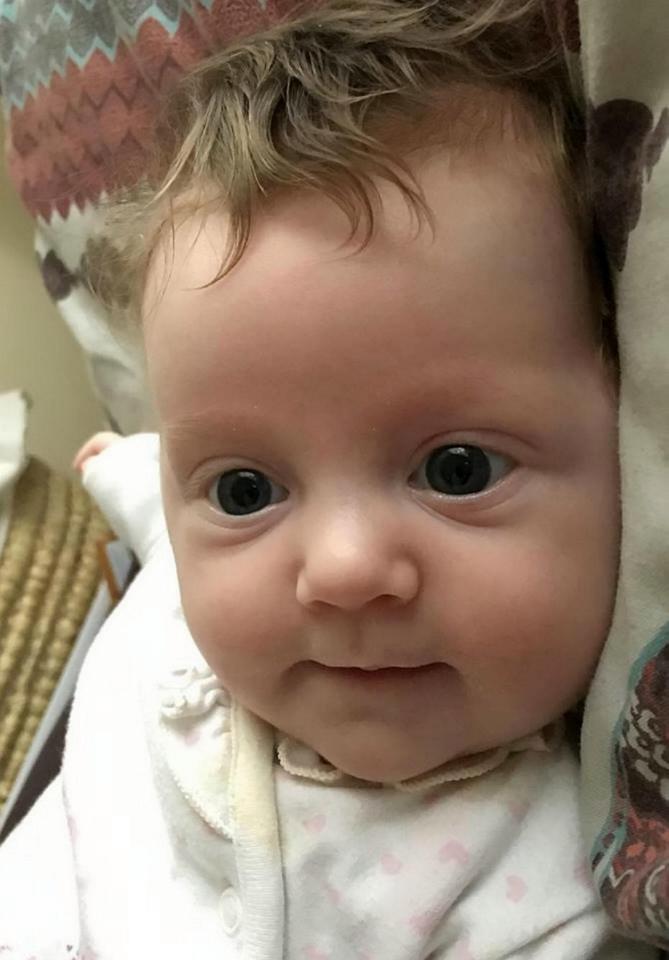 In her body the first cell divisions take place, and a new little being is formed. Her reproductive system, which prepares for fertilization and pregnancy every month for about thirty-five years, is optimally adapted to nurturing an embryo and carrying it to term.
In her body the first cell divisions take place, and a new little being is formed. Her reproductive system, which prepares for fertilization and pregnancy every month for about thirty-five years, is optimally adapted to nurturing an embryo and carrying it to term.
In contrast to a man, who produces sex cells throughout his life, a woman’s stock of eggs develops before she is born, then decreases gradually. In the fourth month of embryonic development the ovaries of the female fetus have already produced the six to seven million eggs that comprise her lifetime production of eggs. Even before she is born, millions of the eggs expire; this programmed cell death in the ovaries continues steadily after birth. By puberty, when the young woman ovulates for the first time, only about 400,000 immature eggs remain, and by the time she reaches menopause, in her fifties, virtually her entire stock has been depleted.
During the entire period in which a woman is fertile and ovulating, her ovaries use up no more than four hundred eggs; this figure is often lower since pregnancies, nursing, and hormonal methods of birth control all prevent a woman from ovulating for certain periods. Only a few of these eggs at most will ever be fertilized and become a child. So a woman actually has an enormous reserve capacity.
Only a few of these eggs at most will ever be fertilized and become a child. So a woman actually has an enormous reserve capacity.
Before puberty a girl’s hormones undergo a change that makes her ovaries begin to produce more estrogen, and the eggs begin to mature. The shape of her girlish body also begins to change, and her entrance into adulthood is confirmed when she begins to menstruate. The most important female hormone is estrogen. It contributes not only to the development of a woman’s figure but also the size of her breasts, the softness of her skin, and the thickness of her pubic hair; it also affects some regions of her brain. Estrogen reaches all these parts of her body via the circulatory system.
A century ago young women usually had their first period around the age of fifteen, but today in well-to-do countries such as Sweden and the United States and Britain menarche is much earlier (the average age is 12.5). One explanation is that the timing is governed more by weight than by age.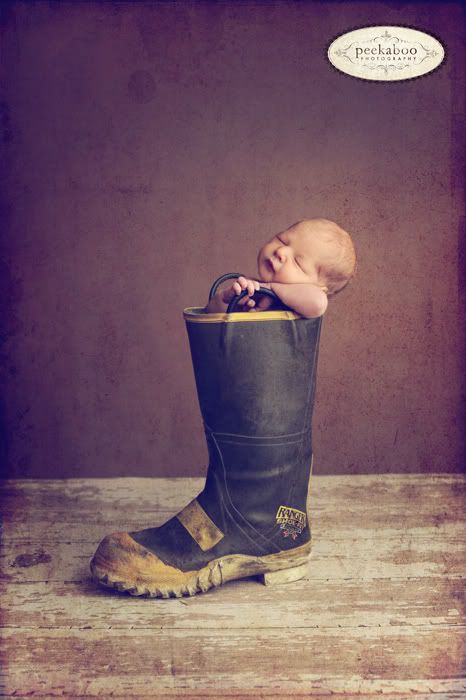 We eat differently today, and girls tend to achieve the critical weight for menstruation (46–47 kilograms/101–103 pounds) far earlier than in the past. Of course, there are wide individual and ethnic variations.
We eat differently today, and girls tend to achieve the critical weight for menstruation (46–47 kilograms/101–103 pounds) far earlier than in the past. Of course, there are wide individual and ethnic variations.
Parents Say: How can I explain to my child how babies are born?
Little kids ask a lot of questions. Some are easy to answer. Others, not so much…
Here's how some BabyCenter parents handled one of the more challenging questions you're likely to hear.
Keep it simple
"You might ask your child how she thinks it happens, and use that as your starting point. For example, if she thinks, as my son does, that the baby comes through the belly button, you could gently correct her by saying that she's close, but the baby comes out a different hole. That might be explanation enough."
— A BabyCenter member
"My son is 3, and I'm pregnant with our second child. I told him the doctor helps "move" the baby out of Mommy's tummy and into a nice warm blanket. I used the word "move" instead of "push" so as not to confuse him, and I concentrated more on the warm blanket and him being a big brother."
I used the word "move" instead of "push" so as not to confuse him, and I concentrated more on the warm blanket and him being a big brother."
— Melissa
"Never answer a question that your child isn't asking. My own child asked how a friend was going to get her baby out. I simply said that she was going to push the baby out. He was fine with that. A few years later he asked exactly where babies came out, and that's when I told him."
— A BabyCenter member
Try show and tell
"I happened to be preparing dinner when my son asked how the baby would come out of me and how the doctor would see the baby. I explained the best I could about how you can see inside women, and the baby would come out the same area that the doctor had to look into. I was seasoning a raw chicken, and I used it to illustrate how the baby would be in the chicken's tummy and come out of the opening in the bottom. (Yes, I know chickens lay eggs.) The light came on, and he finally seemed to understand. I just hope I didn't ruin chicken for him for the rest of his life!"
I just hope I didn't ruin chicken for him for the rest of his life!"
— A BabyCenter member
"As a childbirth educator, I've found that a turtleneck shirt and a doll are very effective for helping children understand the process. I hide the doll in the shirt and then hold it against my belly with neck opening facing down. Then I tell my 2-year-old that the baby is in there, warm and comfy and happy, and when it's time for the baby to be born, my belly will squeeze the baby and push it out. Then I squeeze the shirt until the baby comes out the opening."
— JD
"This past weekend my son attended a class called Kangaroo Kapers at our hospital's birth center. He toured the area, practiced changing diapers on a doll, and learned about holding and swaddling a baby. The instructors did not go into graphic detail but offered a child-friendly version of what was going to happen the day the baby came, including how Mommy was going to be cranky in the delivery room. They showed him all the equipment and explained its use. I would highly recommend checking out similar classes in your area."
They showed him all the equipment and explained its use. I would highly recommend checking out similar classes in your area."
— M. Parrish
Watch a good video
"My 2-year-old and I watched a video of a dog having puppies. He asked if someone was going to pull out our baby too. I told him that my doctor would be there to catch the baby, but that the baby and my body will work together to get the baby out. He was completely satisfied by that answer and then focused on the fact that I wouldn't have to lick our baby clean like the dog did because we can use towels!"
— A BabyCenter member
"My 3-year-old has watched her own birth video and knows anatomically correct wording. She says, "Baby Petey is going to open the uterus door and come out of Mommy's vagina with contractions when it's time." Just use your instincts and feel out what your child can handle, but make sure you are comfortable with your answers first, as kids can pick up on all of your emotions about a subject if you are uncomfortable. "
"
— Elizabeth
"My 4-year-old asked how the baby will be born, and I showed him a short video that I found on BabyCenter. He watched it once, and we talked about how the baby pushes to get out and how the mommy helps by pushing too. My son will be in the delivery room with us, so my husband and I were very worried how he would react. We decided that broaching the subject beforehand without any of the mystery was best. It also helped that he watches a lot of nature shows and already knows that girls are the ones giving birth. But he still asks me if I'm going to have an egg and have to sit on it."
— A BabyCenter member
Read a children's book on the topic
"I have a book for my 4-year-old called When You Were Inside Mommy, by Joanna Cole. It explains how you begin as a cell – half from Mom, half from Dad – and you grow from there. No unnecessary graphics or details. I even skip over some of the sentences I don't think he will grasp. He loves it, and we read it every night before bed.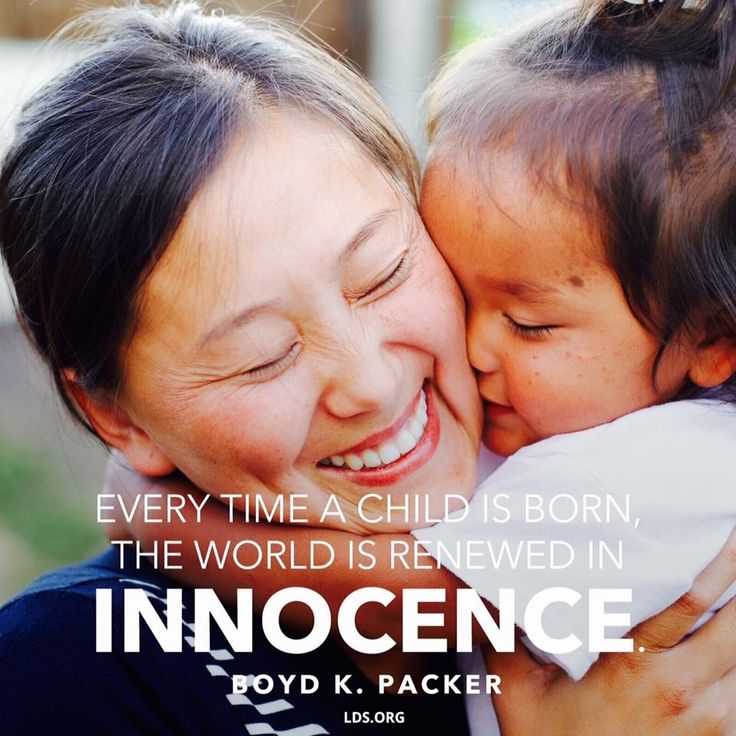 "
"
— A BabyCenter member
"A great book called What to Expect When Mommy's Having a Baby, by Heidi Murkoff, explains the whole process very simply, and you can read as much or as little as you want to fit your child's developmental level. It seems to be aimed at children ages 3 to 6."
— Katie
You Were Born on Your Very First Birthday, by Linda Walvoord Girard, does a good job of explaining birth without going into too much detail, which my 4-year-old is not ready for yet.
— Angie
"I think the book A Child Is Born, by Lennart Nilsson and Lars Hamberger, is an excellent resource. It has photos of everything from conception to birth and shows the fetus in all stages of development. I will choose which pictures to show my children depending on their ages."
— Yeeska
Your baby was born prematurely | Regional Perinatal Center
Premature babies
If your baby is born too early, the joy of having a baby can be overshadowed by health concerns and thoughts about the possible consequences.
Instead of returning home with the baby, holding him and caressing him, you will have to stay in the department, learn to cope with the fear of touching the baby, realize the need for treatment and various manipulations, get used to the complex equipment that surrounds him.
In this situation, not only your baby needs help, you need it too! The best assistants are your loved ones, their love and care, as well as professional advice and recommendations from doctors and psychologists. This section of articles will help you improve your knowledge of preterm infant care, development and nutrition.
Your help for the baby
Previously, parents were often not allowed into the neonatal unit and, especially, into the intensive care unit because of the fear of infection of the baby, but now the contact of the parent with the child is recognized as desirable and is prohibited only in exceptional cases (for example, if parents have acute infections)
Close communication between you and your baby is very important from the first days of his life. Even very immature premature babies recognize the voices and feel the touch of their parents.
Even very immature premature babies recognize the voices and feel the touch of their parents.
The newborn needs this contact. Studies have shown that it greatly contributes to the faster adaptation of an immature child to new conditions and the stabilization of his condition. The baby's resistance to therapy increases, he absorbs large amounts of food and quickly begins to suck on his own. Contact with the child is important for parents. Taking part in the care of the baby, they feel their involvement in what is happening and quickly get used to a new role, especially when they see how he reacts to their presence.
By constantly and attentively observing the baby, parents can notice the smallest changes in his condition before others. In addition, communication in the hospital is a good practice that will undoubtedly come in handy after discharge. For parents, early physical contact with the baby is very valuable, because it allows them to feel him, despite the incubator and other obstacles, and show him their love.
Treatment in the neonatal intensive care unit requires parents to have full confidence in all medical staff.
Nursing premature babies in the hospital
Many premature babies cannot breathe, suckle and regulate their body temperature sufficiently after birth. Only in the last weeks of pregnancy is the maturation of the lungs, gastrointestinal tract, kidneys, brain, which regulates and coordinates the work of all organs and systems.
Fluid loss due to the immaturity of the skin of premature babies and the insufficiency of thermoregulation processes require constant attention. Modern approaches focused on nursing premature babies help to cope with these problems.
Heat regulation incubator
Premature babies are very susceptible to temperature fluctuations. At the same time, clothing can interfere with the monitoring of the baby's condition and its treatment. That is why an incubator is used to provide the conditions necessary for premature babies. It maintains a certain temperature and humidity, which change as the child grows. When the body weight of a premature infant reaches 1500-1700 g, he can be transferred to a heated bed, and after reaching a weight of 2000, most premature babies can do without this support. There are no strict rules here: when nursing children with low body weight, doctors are guided by the severity of the condition of each premature baby and its degree of maturity.
That is why an incubator is used to provide the conditions necessary for premature babies. It maintains a certain temperature and humidity, which change as the child grows. When the body weight of a premature infant reaches 1500-1700 g, he can be transferred to a heated bed, and after reaching a weight of 2000, most premature babies can do without this support. There are no strict rules here: when nursing children with low body weight, doctors are guided by the severity of the condition of each premature baby and its degree of maturity.
In incubators, very young premature babies are placed in special "nests" - soft hemispheres in which the baby feels comfortable and assumes a position close to intrauterine. It must be protected from bright lights and loud noises. For this purpose, special screens and coatings are used.
The most important treatments during the first days of life of premature infants with low and very low birth weight:
Use of an incubator or heated bed.
Oxygen supply for respiratory support.
If necessary, artificial ventilation of the lungs or breathing using the CPAP system.
Intravenous administration of various drugs and fluids.
Carrying out parenteral nutrition with solutions of amino acids, glucose and fat emulsions.
Don't worry: not all premature babies need such extensive treatment!
Mechanical ventilation and CPAP for respiratory support
When it comes to nursing, oxygen supply is of the utmost importance for premature babies. In a child born before the 34-35th week of pregnancy, the ability of the lungs to work independently is not yet sufficiently developed. The use of a constant flow of air with oxygen, which maintains a positive airway pressure (CPAP), leads to an increase in blood oxygen saturation.
This new method made it possible for the majority of even very immature children to do without mechanical ventilation. The need for intubation of children has disappeared: during treatment with CPAP, oxygen is supplied through short tubes - cannulas that are inserted into the nasal passages.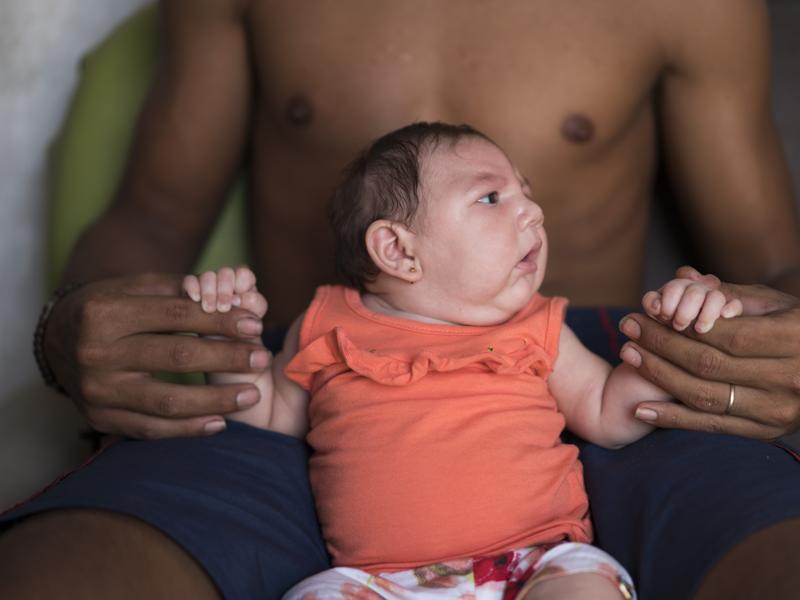 CPAP or mechanical ventilation is continued until the lungs can function at full capacity on their own.
CPAP or mechanical ventilation is continued until the lungs can function at full capacity on their own.
In order for the lungs to expand and remain in such a state in the future, a surfactant is needed - a substance that lines the alveoli from the inside and reduces surface tension. Surfactant is produced in sufficient quantities starting from the 34-35th week of pregnancy. Basically, it is by this time that the formation of the lungs is completed. If the baby was born earlier, modern technologies allow the introduction of surfactant into the lungs of premature babies immediately after their birth.
Parenteral nutrition - administering nutrient solutions by vein
Premature babies, especially those born weighing less than 1500 g, are not able to get and absorb enough nutrients, even when fed through a tube. For the rapid growth of the baby, a large amount of nutrition is needed, and the size of the stomach is still very small, and the activity of digestive enzymes is also reduced.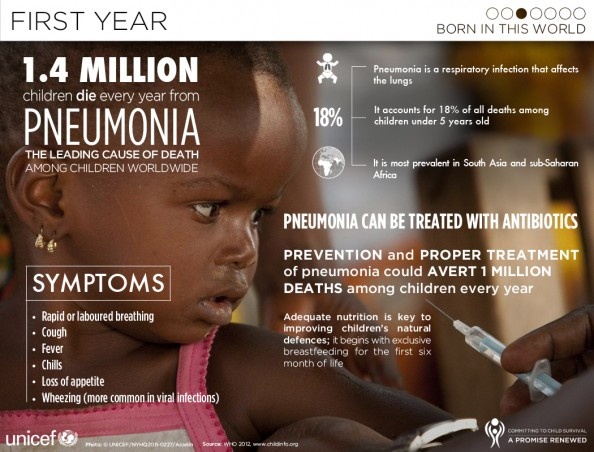 Therefore, such children are given parenteral nutrition.
Therefore, such children are given parenteral nutrition.
Special nutrients are injected into a vein using infusion pumps that deliver solutions slowly at a predetermined rate. In this case, amino acids necessary for building proteins, fat emulsions and glucose, which are sources of energy, are used. These substances are also used for the synthesis of a number of hormones, enzymes and other biologically active substances. Additionally, minerals and vitamins are introduced.
Gradually, the volume of enteral nutrition increases, and parenteral nutrition decreases until it is completely canceled.
Premature infants with gastrointestinal disease require parenteral nutrition for a longer period of time.
By the time your grown baby is discharged from the hospital, everything should be well prepared at home. And this applies not only to the environment, clothes and means of caring for the child.
All family members must be ready to receive the baby.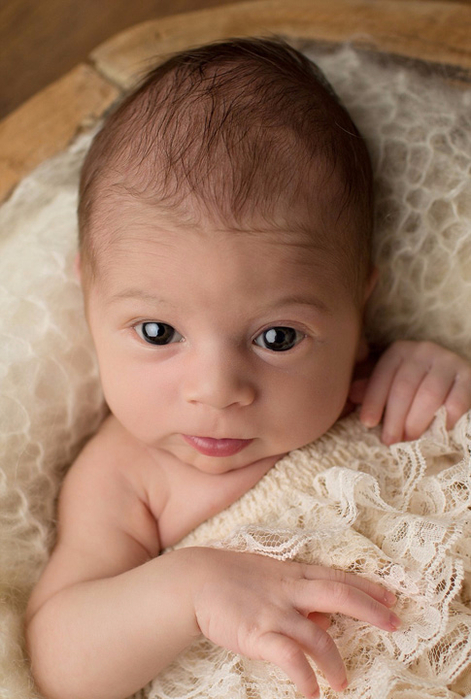 Of course, the main care will fall on the shoulders of the parents. Although you have already gained some experience in the hospital, it is important to feel the support of others, especially in the early days.
Of course, the main care will fall on the shoulders of the parents. Although you have already gained some experience in the hospital, it is important to feel the support of others, especially in the early days.
Older children can also help. The discharge of your baby is a great joy that you want to share with all your relatives.
While you are getting used to your new role, it is important that nothing distracts you from communicating with your child. Now all the care and responsibility for the baby lies entirely with you. Everything you need to take care of him should be at hand.
Preparing for discharge from the hospital
Before discharge, you must make sure that:
- Prepared the crib, bath for bathing and a place for changing clothes, preferably a changing table. A crib should be placed in the parents' bedroom, the child should not be left alone even at night. A stroller is also required.
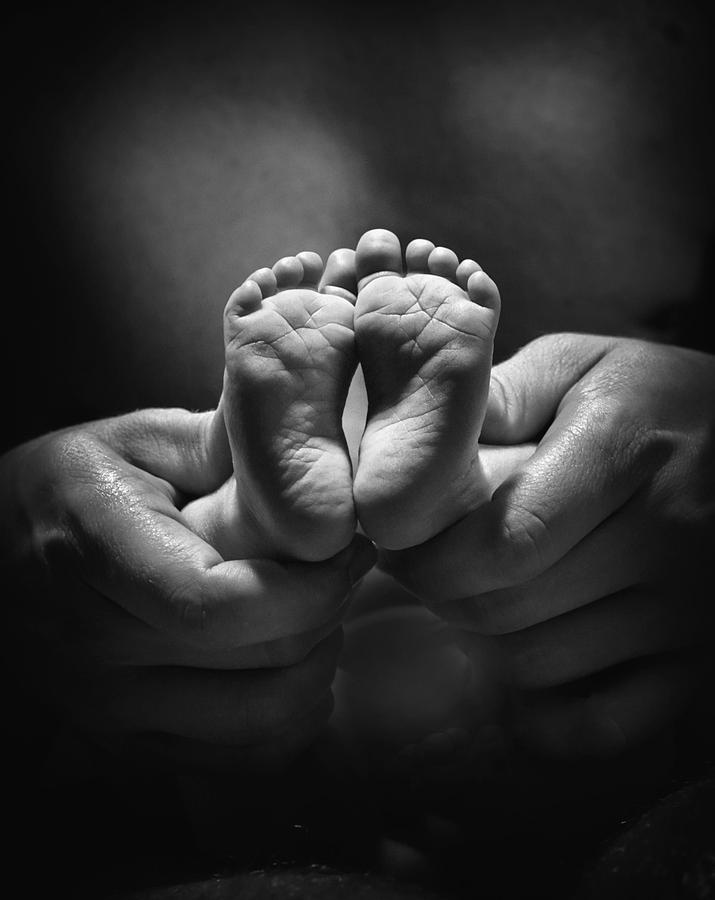 you have baby milk that was recommended by the doctor before discharge (if the child is on mixed or artificial feeding). As a rule, this is a specialized medical product. You need a certain number of small bottles and teats of the appropriate size, as well as a sterilizer. All premature babies will need pacifiers.
you have baby milk that was recommended by the doctor before discharge (if the child is on mixed or artificial feeding). As a rule, this is a specialized medical product. You need a certain number of small bottles and teats of the appropriate size, as well as a sterilizer. All premature babies will need pacifiers. - You have fully mastered breastfeeding or bottle feeding.
- If your baby is not suckling all the required amount of milk from the breast and is supplementing from a bottle, you have purchased a breast pump that you have learned to use; you may also need it if you have a lot of breast milk.
- You have asked your doctor how often your child's weight should be monitored.
- If your baby still needs medication, you have the required amount at home. And you know exactly how and when to give them to your child.
- You know which warning signs to look out for.
- After the baby is discharged, a pediatrician and a neonatologist will look after the baby, to whom you will give the discharge summary from the hospital.

- You know how the hospital from which your child is being discharged will provide follow-up care after discharge.
- You know which specialists and how often should examine your baby (oculist, neuropathologist, etc.).
- All the emergency phone numbers you need are at your fingertips.
When can a child go home
This question is very difficult to answer because all children are different. The stay in the hospital can last from 6 days to 6 months, depending on the degree of prematurity of the child, the severity of his condition, as well as the presence of certain complications.
Of course, all parents look forward to the moment when the baby can be brought home. Long-term nursing of a premature baby is often a difficult test for you. But we must not forget that safety comes first, and the baby can be discharged home only when the doctors are confident in the stability of his condition. It is certainly in your interest as well.
The rate of increase in body weight and length
Weight gain is the main indicator of the growth of the baby and the adequacy of the treatment. The weight of the child, especially in the first days and weeks of life, is influenced by a number of factors: the presence of milk in the stomach (immediately after feeding), the time of bowel movement, the degree of filling of the bladder, the presence of edema. Therefore, if an edematous child does not gain weight for several days, and perhaps even loses it, do not worry. It should be remembered that children grow unevenly and periods of high weight gain alternate with lower ones. It is better to focus not on weight gain per day, but on the dynamics of this indicator over several days or a week.
It is currently accepted that in the interval corresponding to 28-34 weeks of pregnancy, the normal weight gain of the child is 16-20 g/kg per day. Then it is reduced to 15 g/kg.
It is also important to take into account the rate of increase in body length. With malnutrition, at first the child gains less weight (or even loses it), and with a more pronounced deficiency of nutrients, his growth is also disturbed.
With malnutrition, at first the child gains less weight (or even loses it), and with a more pronounced deficiency of nutrients, his growth is also disturbed.
The weight must not only increase at a certain rate, but must also correspond to the length of the baby. An important parameter characterizing the development of the baby is an increase in head circumference. The brain most actively increases in size during the first 12–18 months of life. But an excessively rapid increase in head circumference, as well as a slowdown in the rate of its increase, indicate neurological disorders.
A premature baby can be discharged from the hospital if:
- he is able to independently maintain the required body temperature;
- does not need breathing support and constant monitoring of the work of the respiratory and cardiovascular systems;
- can suck out the required amount of nutrition on its own;
- does not need round-the-clock monitoring and frequent determination of biochemical or other indicators;
- supportive care can be provided at home;
- he will be under the supervision of a local pediatrician and neonatologist at the place of residence.

The decision to discharge home is made for each patient individually. In addition to the state of health of the baby, the degree of preparedness of parents, their ability to provide high-level care for a premature baby is also taken into account.
Feeding a premature baby after discharge
Breastfeeding is the ideal way to feed premature babies.
However, if the baby was born much prematurely and his birth weight did not exceed 1800-2000 g, his high nutritional requirements cannot be met by breastfeeding. The growth rate will be insufficient. Moreover, over time, the content of many nutrients, including protein, in milk decreases. And it is the main material for building organs, and primarily brain tissue. Therefore, proteins must be supplied to the body of a premature infant in the optimal amount.
In addition, premature babies have a significantly increased need for calcium and phosphorus, which are essential for bone formation.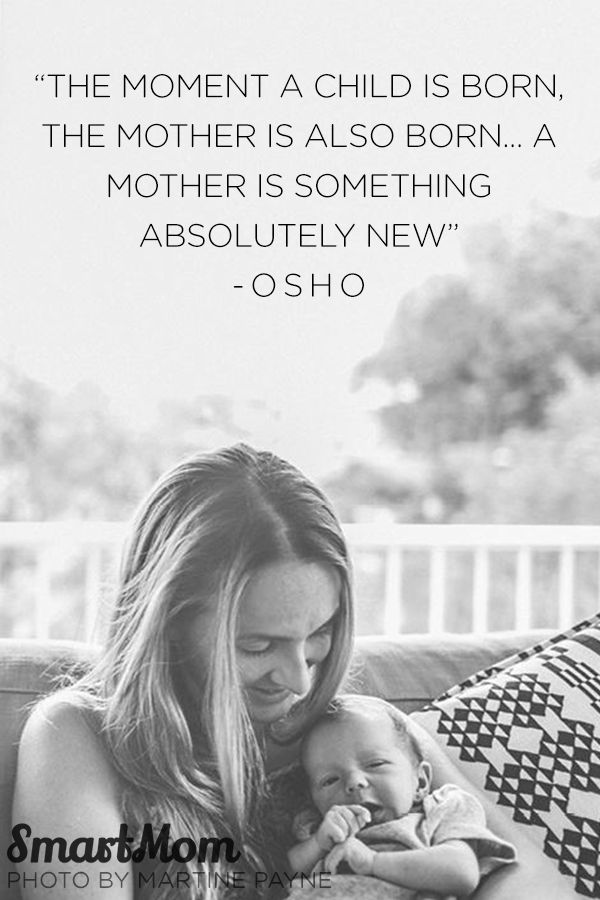
In order for the baby's nutrition to be complete even after being discharged from the hospital, special additives - "enrichers" are introduced into breast milk in a certain amount, already less than in the hospital. They make up for the lack of protein in it, as well as some vitamins and minerals. As a result, the child receives them in the optimal amount. The duration of their use will be determined by your doctor. If there is not enough milk or it does not exist at all, children born prematurely should be transferred to artificial feeding. Complementary feeding of premature babies is carried out with special children's dairy products designed for children with low birth weight. This baby milk is ideally suited to both the ability of immature children to digest and assimilate nutrients, and their needs.
Premature infant milk contains more protein, fat and carbohydrates than term infant milk, resulting in a higher calorie content. In specialized baby milk, the concentration of many minerals is higher, especially iron, zinc, calcium, phosphorus, as well as vitamins, including vitamin D. Long-chain polyunsaturated fatty acids of the Omega-3 and Omega-6 classes are introduced into such products, which are necessary for proper development of the brain and organ of vision, as well as nucleotides that contribute to the optimal development of immunity. However, when the child reaches a certain weight (2000-2500 g), you should gradually switch to feeding with standard baby milk, but not completely. Specialized baby milk can be present in the diet of a premature baby for several months. This time, as well as the volume of the product, will be determined by the doctor. He will answer all your questions about how to feed your baby.
Long-chain polyunsaturated fatty acids of the Omega-3 and Omega-6 classes are introduced into such products, which are necessary for proper development of the brain and organ of vision, as well as nucleotides that contribute to the optimal development of immunity. However, when the child reaches a certain weight (2000-2500 g), you should gradually switch to feeding with standard baby milk, but not completely. Specialized baby milk can be present in the diet of a premature baby for several months. This time, as well as the volume of the product, will be determined by the doctor. He will answer all your questions about how to feed your baby.
At present, specialized children's dairy products have been developed and are being used to feed premature babies after discharge from the hospital. In its composition, it occupies an intermediate position between a specialized product for premature babies and regular baby milk. Your baby will be transferred to such baby milk while still in the hospital. You will continue to give it to your child at home, and the doctor, watching him, will tell you when it will be possible to switch to regular standard baby milk. If the baby was born with a very low body weight or is not gaining weight well, special baby milk can be used for a long time - up to 4 months, 6 or even 9months. The beneficial effect of such children's dairy products on the growth and development of the child has been proven in scientific studies.
You will continue to give it to your child at home, and the doctor, watching him, will tell you when it will be possible to switch to regular standard baby milk. If the baby was born with a very low body weight or is not gaining weight well, special baby milk can be used for a long time - up to 4 months, 6 or even 9months. The beneficial effect of such children's dairy products on the growth and development of the child has been proven in scientific studies.
Feeding needs for premature babies
Higher caloric intake because they need to gain weight faster than term babies.
More protein as premature babies grow faster.
More calcium and phosphorus for bone building.
More trace elements and vitamins for growth and development.
A premature baby grows faster than a term baby. Nutrition for such children is calculated taking into account body weight at birth, the age of the baby and its growth rate. As a rule, the calorie content of the daily diet is about 120-130 calories per 1 kg of body weight.
It is very important that your baby continues to gain weight quickly and grow in length after discharge. To do this, feeding premature babies must be carried out using a specialized fortified diet prescribed by a doctor.
How a newborn baby changes - articles from the specialists of the clinic "Mother and Child"
Babin Evgeny Alexandrovich
Pediatric surgeon, Orthopedic traumatologist, Pediatric orthopedic surgeon
Mother and Child Clinic South-West, Mother and Child Clinic Kuntsevo,
The baby was born, and we expect him to look like beautiful and pink babies from advertising pictures. And he is some kind of red, then suddenly turned yellow, on the skin or a rash, or peeling. In addition, the weight is still unstable, the chair is incomprehensible - is the child healthy? Healthy, and all these changes are the so-called transient (transitional) states. Where do they come from, what do they look like and what to do with it all?
The child sat in the mother's stomach for nine months, swam in the water and received oxygen through the placenta. As soon as the baby was born, his world immediately became different: instead of water around him, air, the ambient temperature dropped from 36.6-37 ° C to 22-25 ° C, plus gravity, sounds, smells, bright light. And now you have to breathe (lungs) yourself, eat differently, and then also remove metabolic products. And just like that, it is not easy for a newborn to immediately switch from one lifestyle to another, it takes time. That is why, from the point of view of physiology, in the first month of life, “something happens all the time” with children, and much more often and brighter than in later life. These are the transitory (transitional, boundary) states. All of them surprise and even frighten young parents, especially since transition states appear and disappear very quickly. But for newborns, they are completely natural. What moms and dads see most often are transitional states of skin, stool, weight, plus or minus a couple more conditions.
As soon as the baby was born, his world immediately became different: instead of water around him, air, the ambient temperature dropped from 36.6-37 ° C to 22-25 ° C, plus gravity, sounds, smells, bright light. And now you have to breathe (lungs) yourself, eat differently, and then also remove metabolic products. And just like that, it is not easy for a newborn to immediately switch from one lifestyle to another, it takes time. That is why, from the point of view of physiology, in the first month of life, “something happens all the time” with children, and much more often and brighter than in later life. These are the transitory (transitional, boundary) states. All of them surprise and even frighten young parents, especially since transition states appear and disappear very quickly. But for newborns, they are completely natural. What moms and dads see most often are transitional states of skin, stool, weight, plus or minus a couple more conditions.
How the skin changes
The child was born, and we see that he is all sort of bluish-purple, and then his skin color immediately turns red. On the second day after birth, the baby "blushes" the brightest. Doctors call this redness "erythema simple" and it appears due to the fact that the skin adapts to a new environment. Then the child's skin turns pale and by the end of the first week of life it becomes the pale pink color we are used to.
On the second day after birth, the baby "blushes" the brightest. Doctors call this redness "erythema simple" and it appears due to the fact that the skin adapts to a new environment. Then the child's skin turns pale and by the end of the first week of life it becomes the pale pink color we are used to.
But that's not all. On the third or fifth day of life, the baby's skin may begin to peel off, especially on the abdomen and chest. What's this? Does the child lack vitamins, something with nutrition, is the air too dry in the house? No, this is also a transitional state - physiological peeling, and it is also associated with the fact that the skin is adapting to a new life. The skin flakes for about a week, and then everything goes away. You don't need to do anything with it. Of course, you can treat the skin with various softening lotions and creams, but there will be no significant effect from them. Very soon, the baby's skin will become smooth and soft on its own.
Most of all, parents are afraid of a rash on the baby's skin, which does not often, but sometimes still appears in the first week of life.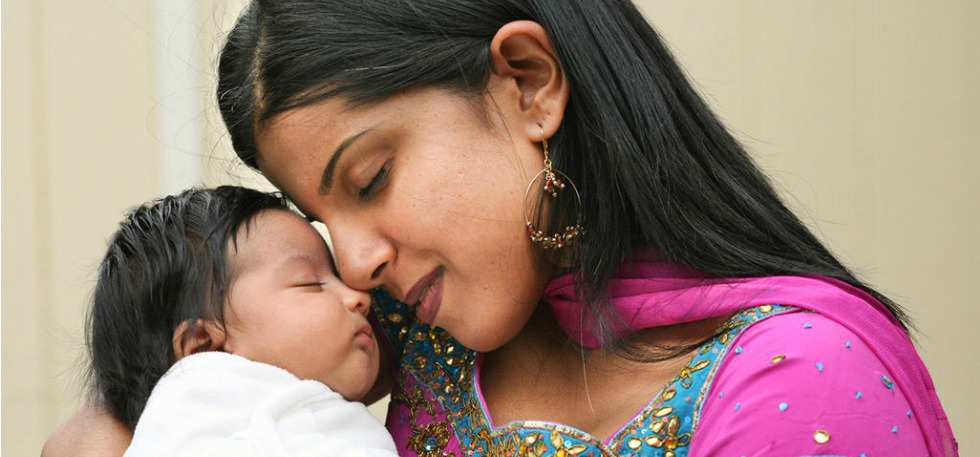 This is the so-called toxic erythema - spots with grayish-yellow seals in the center. The rash is most often located on the extensor surfaces of the arms and legs around the joints, on the chest. Less often, such spots can be on the whole body (except for the palms, feet and mucous membranes). “Maybe it’s chickenpox, rubella, or some other disease?” parents are afraid. No, this is a kind of reaction of the skin of a newly born baby to its environment, especially to hypothermia, overheating, contact with clothes, food. Within one to three days, new spots may appear, but more often two or three days after the onset, they all disappear without a trace. At the same time, the child’s well-being is not disturbed, the body temperature is normal and he does not need any medication. The only thing is that you need to take care of the bubbles on the skin: for example, gently blot them after bathing. And you also need to make sure that the bubbles do not rub and they do not burst (otherwise an infection may join them).
This is the so-called toxic erythema - spots with grayish-yellow seals in the center. The rash is most often located on the extensor surfaces of the arms and legs around the joints, on the chest. Less often, such spots can be on the whole body (except for the palms, feet and mucous membranes). “Maybe it’s chickenpox, rubella, or some other disease?” parents are afraid. No, this is a kind of reaction of the skin of a newly born baby to its environment, especially to hypothermia, overheating, contact with clothes, food. Within one to three days, new spots may appear, but more often two or three days after the onset, they all disappear without a trace. At the same time, the child’s well-being is not disturbed, the body temperature is normal and he does not need any medication. The only thing is that you need to take care of the bubbles on the skin: for example, gently blot them after bathing. And you also need to make sure that the bubbles do not rub and they do not burst (otherwise an infection may join them).
Physiological jaundice
The changes that are visible on the skin do not end there. Very often (in 60-70% of children) on the second or third day of life, the skin turns yellow, the maximum of yellowness occurs on the third or fourth day, and by the end of the first week it disappears. This is how physiological jaundice of a newborn is manifested - a condition in which the amount of bile pigment, bilirubin, increases in a child. In some children, jaundice is similar to a light tan (parents may not notice it), while in others, the skin will turn bright yellow. Very quickly, the level of bilirubin returns to normal and the skin color becomes normal again. If jaundice is mild and passes quickly, then no additional treatment is needed. But if jaundice does not disappear or the skin color is intense yellow, you should consult a doctor.
Weight loss
Do you think the baby will immediately be born well-fed, with folds and cute roundness? No, right after birth, this is still far away. In the first days of life, an already not too well-fed newborn will lose even more weight. Such weight loss is a natural process, the so-called physiological weight loss. Weight decreases because immediately after birth, the baby loses part of the water through the skin, its umbilical cord dries out, meconium (the first feces) and urine are excreted, and also because the baby still eats a small amount of milk. Maximum weight loss usually occurs by the third or fifth day and is normally no more than 6-8% of birth weight. At this time, mother and baby are usually discharged from the hospital, but there is no need to worry. By the seventh or tenth day of life, a healthy baby will restore its previous parameters.
In the first days of life, an already not too well-fed newborn will lose even more weight. Such weight loss is a natural process, the so-called physiological weight loss. Weight decreases because immediately after birth, the baby loses part of the water through the skin, its umbilical cord dries out, meconium (the first feces) and urine are excreted, and also because the baby still eats a small amount of milk. Maximum weight loss usually occurs by the third or fifth day and is normally no more than 6-8% of birth weight. At this time, mother and baby are usually discharged from the hospital, but there is no need to worry. By the seventh or tenth day of life, a healthy baby will restore its previous parameters.
chair changes
On the first or second day, all newborns pass the original stool (meconium): it is thick, viscous and dark green in color. Time passes, the baby begins to receive colostrum, and on the third or fourth day of life, a transitional stool appears. Now areas of dark green color alternate with greenish and yellow ones, and some lumps, mucus are also visible in the stool. It all looks like some kind of intestinal disorder, but it's not. It's just that the gastrointestinal tract is moving to a new job, now it's ready to digest food. By the end of the first week of life, the stool in most children is yellow, similar to gruel, and it will continue to be so.
It all looks like some kind of intestinal disorder, but it's not. It's just that the gastrointestinal tract is moving to a new job, now it's ready to digest food. By the end of the first week of life, the stool in most children is yellow, similar to gruel, and it will continue to be so.
Warm-cold
A typical fear of all grandmothers is that the child is freezing! Yes, indeed, in newborns, the body temperature regulation processes are still imperfect, so babies easily cool down, but they also overheat just as easily. For example, if a newborn is dressed too warmly or placed next to a heating battery, he will quickly overheat, even if this is the usual temperature in the room. At the same time, the child easily loses heat when he is undressed for a long time or he lies in wet clothes. Therefore, in the room where there is a newborn, the air temperature should be adequate - 20-22 ° C. And if she rises higher, and the child is warmly dressed, then this will also not be good.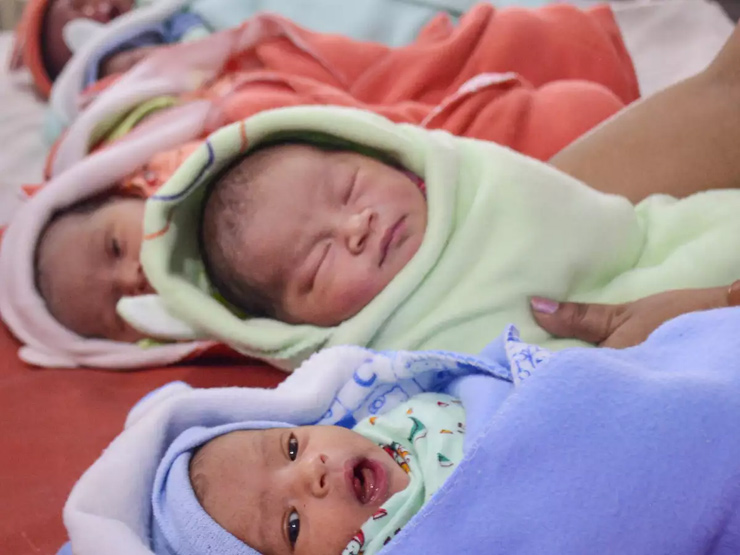
Sometimes, very rarely (in 1% of newborns), body temperature on the third or fifth day may temporarily rise to 38–39 °C. There are no other symptoms of the disease, the body temperature quickly returns to normal, but the parents have time to get scared. It’s difficult to figure out what it is - temporary hyperthermia or still a disease - it’s difficult, so it’s better to call a doctor.
Hormonal crisis
An uncommon occurrence, but it also occurs occasionally. In some children, on the third or fourth day of life, the mammary glands become engorged (in both girls and boys). They increase as much as possible by the seventh or eighth day, and liquid discharge may even appear from them. Some girls have very little bloody discharge from the vagina for a very short time. This is the so-called hormonal crisis - it occurs due to the action of maternal hormones - estrogens (they penetrate through the placenta during childbirth). At the peak of estrogen action, the signs of a hormonal crisis are maximum, then the hormones are removed from the body and the symptoms gradually disappear. Therefore, you don’t need to apply a cabbage leaf to your chest, make compresses with camphor or something else: everything will pass by itself.
Therefore, you don’t need to apply a cabbage leaf to your chest, make compresses with camphor or something else: everything will pass by itself.
Usually, all these transitional states are pronounced in the first week of life, less often, but it happens that they drag on for up to three to four weeks. One more thing - it is not necessary that the child will show all transitional states, but almost everyone has physiological weight loss and transitional stools. And many of the transitional states are completely invisible to parents, but they also exist, they can simply be identified only by laboratory methods.
So we are not in a hurry to be frightened, noticing that the child’s skin suddenly began to peel off or he turned slightly yellow. We remember that he must adapt to a new life, that in the first time after birth, the baby has the right to some changes. Especially if, with all this, the baby is cheerful, calm and eats well. Well, if you are still somehow anxious, ask your pediatrician questions.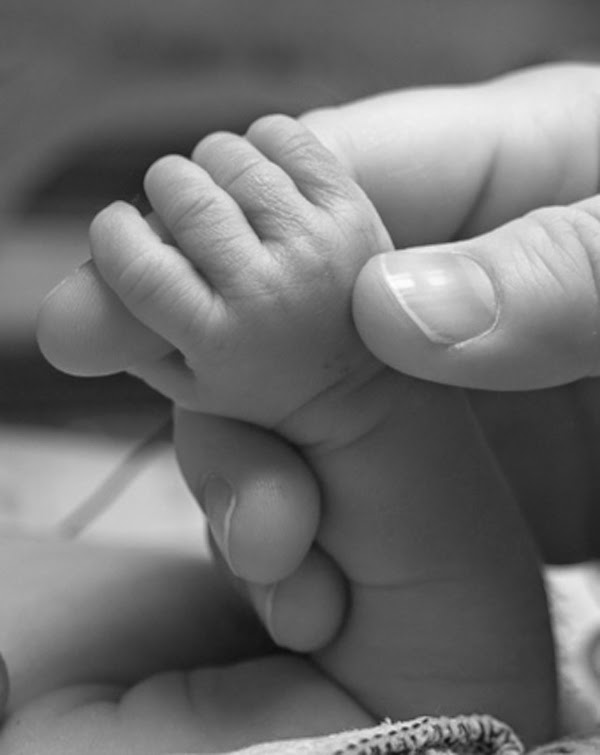 He will definitely be able to put everything in its place.
He will definitely be able to put everything in its place.
Inset
The maximum weight loss in a newborn usually occurs by the third or fifth day and normally amounts to no more than 6-8% of body weight at birth.
From the point of view of physiology, in the first month of life, “something happens all the time” with children, and much more often and brighter than in later life. These are the transitory (transitional, boundary) states.
In infants, the body temperature regulation processes are still imperfect, so they easily become overcooled and overheated. In this regard, in the room where there is a newborn, the air temperature should be about - 20–22 ° C.
Physiological jaundice of the newborn:
- occurs on the 2-3rd day of the baby's life, reaches a maximum on the 4-5th day, and disappears by the 10th day;
- the general condition of the child does not suffer;
- the level of bilirubin in the blood does not exceed 180 µmol/L.

Make an appointment
to the doctor - Evgeny Alexandrovich Babin
Clinic "Mother and Child" KuntsevoClinic "Mother and Child" South-West
Pediatric surgeryChildren Medical examinationSupervision of children at homeSupervision of children with special needs
By clicking on the send button, I consent to the processing of personal data
Attention! Prices for services in different clinics may vary. To clarify the current cost, select a clinic
Clinical Hospital MD GROUPClinical Hospital Lapino-1 "Mother and Child"Children's Clinic KG "Lapino" on New Riga (branch)Clinic "Mother and Child" KuntsevoClinic "Mother and Child" SavelovskayaClinic "Mother and Child" South-WestClinic "Mother and Child" » Novogireevo
All directions
01.
Kinesiotherapy for children
02.

